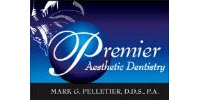Call (803) 781-7901
Dental Health Care: Discolored Primary Teeth
Discoloration of the primary (baby) incisors (front teeth) is most often noticed by parents. This discoloration may be extrinsic or intrinsic. Tooth brushing or a professional cleaning can remove extrinsic discolorations or stains. Intrinsic discoloration occurs within the tooth structure.
Some apple juices and grape juice may cause staining. This type of stain can usually be brushed off the teeth at home. If your child has a tendency to stain, try diluting the juice with water. Once the enamel begins to break down, the staining may be more difficult to remove because it is deep down in the tiny holes created by break down of the enamel. This could progress on to decay. If the teeth appear to be a dull, white color in some spots, discontinue juices completely or dilute the juice with water. Juice is twenty times more decay-causing than milk. Juices should be limited to mealtime only.
Liquid and chewable medicines have a high sugar content and most are colored with dye. A light yellow-brown film may cover the teeth. This occurs most often on the bottom front teeth. Bedtime tooth brushing is especially important when your child is taking liquid or chewable medicine. Tetracycline is the only antibiotic that could cause damage to the developing permanent teeth if given before eight years of age.
Iron in chewable or liquid vitamins may cause staining of the grooves of the primary (baby) molars. This is difficult to remove, but overall is harmless.
You must brush your child's teeth until six years of age. Bedtime brushing is the most important time of day. Staining may occur if plaque remains on teeth for a long period of time. Plaque is made up of cells from the inside of the mouth, bacteria, and food residues. Teeth may appear to be discolored, but a thorough brushing may remove this stain. Do not use toothpaste until two years of age. Baking soda toothpaste seems to be best for stain removal.
Bacteria called chromogenic (colored) bacteria may cause a dark green or brown stain on the teeth. This stain is usually along the gum line. These bacteria are harmless and will one day just disappear. We do not know why they grow in some mouths and not others. A professional cleaning is usually necessary to remove this stain.
Intrinsic discoloration cannot be removed by cleaning the teeth. This occurs because the enamel on the primary teeth did not form in the usual manner. This may be inherited from one or both parents. It does not necessarily mean that the primary teeth will be more susceptible to decay or that the permanent teeth will have the same appearance.
Trauma to a primary incisor (front tooth) may cause discoloration. If the blood vessels deep inside the tooth break, the blood may be absorbed into the tiny tubes that travel from the inside of the tooth to the outer enamel layer. This is similar to a black and blue mark on the skin. Enamel is translucent, so you can see the evidence of the damage. This may resolve without treatment, but your pediatric dentist should be consulted. A procedure to remove the tissue from the inside of the tooth (pulpectomy) may be necessary.
by Jane A. Soxman, DDS
Call for an appointment:
(803) 781-7901
Make an Appointment
Get the SMILE of your DREAMS!!
HOW LONG HAS IT BEEN SINCE YOU HAD YOUR LAST CHECK-UP?
IF IT HAS BEEN MORE THAN 6 MONTHS CALL US TODAY






